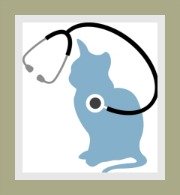Bordetella Bronchiseptica
Cats at Risk
Studies have shown that Bordetella Bronchiseptica, which causes Feline Bordetellosis may in fact be a primary pathogen (germ) in the cause of upper respiratory disease.
It is also thought to be responsible for lower respiratory tract disease, especially in kittens.
Bordetella is probably better known amongst our canine friends as the bacterium responsible for causing trachea-bronchitis or 'kennel cough' in dogs.
B.Bronchiseptica is also closely related to the bacterium B. Pertussis which causes whooping cough in humans.
B. Bronchiseptica is widespread in the cat population and is also found in many other animals - hosts include rodents, pigs, sheep, horses and dogs to name a few.
This bacterium is more prevalent in cats living in colonies (shelters, boarding and breeding catteries, feral cats), but can most certainly also affect cats living in single-cat households (pets).
B. Bronchiseptica is often described as an opportunistic bacterium as it may be dormant in carrier cats and then manifests at times of stress.
Cats that have recovered from the disease shed the organism for up to 5 months.
Generally the bacteria does not survive outside the host for very long, but in densely populated cat colonies, where the environment is heavily contaminated, the bacteria can live in the environment for extended periods.
Feline infectious Upper Respiratory Tract Disease is a common problem in cats particularly in multi-cat households, catteries and shelters.
Feline Herpes Virus and Feline Calicivirus accounts for about 50 % of Upper Respiratory diseases and it is generally thought that the bacterium B. Bronchiseptica is responsible for secondary infections.
Feline Chlamydia is also involved, but the infection is restricted to conjunctival infection (the conjunctiva is the mucus membrane that surrounds or rather covers the inner eyelid).
In feline bordetellosis we review the symptoms, treatment and prevention of this disease.
cats at risk
- Cats that live in colonies or where there is a large population of cats.
- Immuno-compromised cats i.e. cats that are infected with viral infections like Feline Leukemia Virus and Feline Aids (Immunodeficiency Virus)
- Kittens appear to be particularly vulnerable and infected kittens are more likely to develop signs of broncho-pneumonia.
- Geriatric cats are also more susceptible to viral and bacterial infections.
transmission of b. bronchiseptica
Transmission is via direct contact with cats that are infected with B. Bronchiseptica.
- The bacterium is present in the saliva and nasal
secretions and mucus of infected cats.
- When these cats sneeze or cough the bacteria is spread via droplet infection.
Some cats that have recovered from the disease become carriers.
This means they are asymptomatic (have no signs and symptoms), however in times of physical or emotional stress the cat will shed the bacteria and infect other cats.
Research indicates, that there is a possibility that Bordetella may be transmitted between dogs and cats and pigs.
Related Pages:
Top of Bordetella Page
Return to Cat Flu
search our site
please like us
share our site
recommend on google
favorite pages





